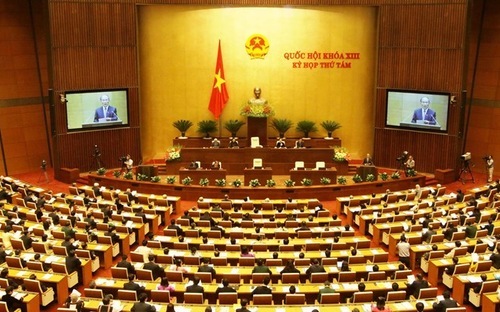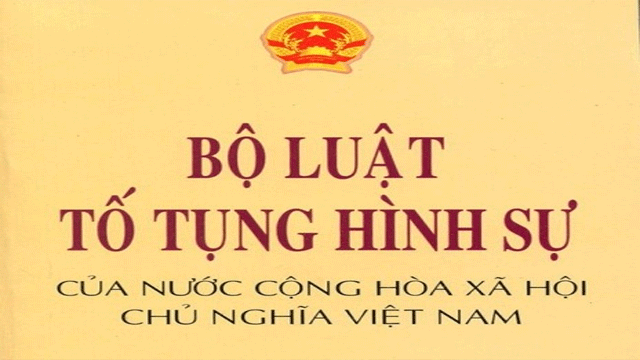On July 2, 2012, President Truong Tan Sang signed Order No. 05/2012/L-CTN to promulgate the Law on Prevention and Combat of Money Laundering, which was passed by the National Assembly of the Socialist Republic of Vietnam, XIII Legislature, at its third session on June 18, 2012. This Law shall take effect from January 1, 2013.
The promulgation of the Law on Anti-Money Laundering (AML) is an important step in completing the legal framework for anti-money laundering activities in our country, contributing to the transparency of the national financial system. At the same time, the promulgation of this Law also fulfills Vietnam's commitments to the international community in the fight against money laundering. Overall, the anti-money laundering mechanism under the AML Law is implemented mainly through establishing a mechanism to collect and process information on customer identification, unusual transactions, and high-value transactions to build a unified database, filter, and identify transactions with the risk of being related to money laundering activities conducted through transactions at financial institutions, related businesses, and individuals in the non-financial sector.
The promulgation of the AML Law aims to complete the legal system to prevent criminal activities from outside when joining the WTO, as our country has liberalized current transactions and gradually liberalized capital transactions, easing control over international money transfers. At the same time, it creates a consistent legal basis to prevent and combat money laundering domestically when the anti-corruption legal system has required income and asset transparency for certain individuals; address inadequacies of current legal provisions arising in practice, such as lack of regulations on anonymous accounts or accounts using false names, applying identification measures, and enhanced measures for foreign politically exposed persons and beneficial owners. The enactment of this law also meets the requirements of integration and compliance with international commitments and standards on AML.
Regarding the scope of regulation, the AML Law stipulates measures to prevent, detect, prevent, and handle organizations and individuals involved in money laundering; Responsibilities of agencies, organizations, and individuals in AML; and international cooperation in AML. The provisions of the AML Law are also applicable to prevent and combat money laundering aiming to finance terrorism.
The Anti-Money Laundering Law clearly defines the subjects of application, including: financial institutions; related business organizations and individuals in the non-financial sector; Vietnamese organizations and individuals; foreigners living in Vietnam or foreign organizations, international organizations, and non-governmental organizations operating in the territory of Vietnam, handling financial transactions, and other related assets with financial institutions and related business organizations and individuals in the non-financial sector; other organizations and individuals related to AML.
Based on relevant international conventions, the AML Law clearly and precisely defines the concept of money laundering compared to Decree No. 74/2005/ND-CP dated June 7, 2005, on AML. Money laundering is understood as the act of organizations or individuals to legitimize the origin of assets obtained from criminal activity, including: Acts specified in Article 251 of the Criminal Code (Crime of legitimizing money, assets obtained from criminal activity); assisting organizations or individuals related to criminals in avoiding legal responsibilities by legitimizing the origin of assets obtained from criminal activities; possessing assets known to be obtained from criminal activities at the time of receipt to legitimize the origin of assets.
The AML Law specifically stipulates instances where financial institutions and non-financial business organizations and individuals (hereinafter referred to as reporting entities) must apply customer identification measures. Customer identification information must include three groups: customer identification information; beneficial owner information; and information on the customer's purpose in relation to the reporting entity. The AML Law also stipulates that reporting entities have the responsibility to update customer identification information throughout the relationship, ensuring customer transactions are consistent with known information about the customer, business activities, risks, and the origin of the customer's assets.
Regarding customer classification by risk level and applying enhanced evaluation measures, compared to the above Decree 74, the AML Law adds requirements that reporting entities must build regulations on customer classification based on risk by customer type, products, services, place of residence, and the customer's main office location. Based on this classification, reporting entities can apply lower-level customer identification measures for low-risk customers and must apply enhanced evaluation measures for high-risk customers, such as individuals with political influence, correspondent banking relationships, and transactions involving new technology.
Regarding reporting responsibilities, reporting deadlines, and recordkeeping, the AML Law stipulates that reporting entities have the responsibility to report to the State Bank of Vietnam when conducting: high-value transactions; suspicious transactions; and high-value electronic money transfers.
The AML Law specifies reporting deadlines for each type of transaction as follows: For high-value transactions and electronic money transfers, reporting entities must report daily for electronic data file reporting; or report within two working days from the transaction date for written or other forms of reporting. For suspicious transaction reports, reporting entities must report within a maximum of 48 hours from the transaction occurrence. If a transaction requested by a customer shows signs related to criminal activity, it must be immediately reported to the State Bank and relevant state agencies.
Regarding recordkeeping, the AML Law stipulates that transaction records and customer reports must be retained for at least 5 years from the transaction date; or from the end of the transaction, account closure, or report date.
To ensure the effectiveness of AML activities, the AML Law requires reporting entities to issue internal regulations on AML to effectively prevent, detect, stop, and handle suspicious activities related to money laundering; in line with their organizational structure, activity scale, and money laundering risk levels.
According to the Law, after collecting and processing information, the State Bank has the responsibility to transfer AML information. When there are reasonable grounds to suspect that a transaction mentioned in the AML-related information or reports is suspected of money laundering, the State Bank must transfer such information or case files to the competent investigative agency. The State Bank is responsible for coordinating and exchanging information with competent agencies in investigating, prosecuting, and adjudicating money laundering crimes; and exchanging information with relevant ministries and central authorities for AML purposes.
To enhance the effectiveness of AML efforts, the Law allows reporting entities to apply temporary measures, including: delaying transactions for no more than three working days when parties involved in the transaction are on the blacklist or have reason to believe that the requested transaction relates to criminal activities. In such cases, the reporting entity must immediately report in writing to the State Bank and relevant state agencies. The reporting entity must freeze accounts, apply sealing measures, or temporarily seize the assets of individuals or organizations when there is a decision from competent state agencies, in compliance with the law, and report the implementation to the State Bank.
The AML Law stipulates that information, documents, and other related materials related to reportable transactions must be kept confidential and only provided to competent agencies according to the law. Reporting entities must not disclose information about reported suspicious transactions or related information to the State Bank. Additionally, the Anti-Money Laundering Law stipulates that agencies, organizations, and individuals fulfilling reporting or information-providing obligations under the AML Law are not deemed to violate legal regulations on ensuring the confidentiality of deposits, assets, account information, and transaction information of customers.
The AML Law stipulates that the Government of Vietnam shall uniformly manage AML activities; the State Bank of Vietnam is responsible to the Government of Vietnam for the unified management of AML and serves as the focal point for collecting, analyzing, and retaining reports on suspicious transactions, and high-value transactions. The ministries: Public Security, Finance, Construction, Justice, and other relevant ministries and central authorities shall, according to their functions and duties, carry out state management and other activities as prescribed by law in AML activities.
Source: According to nhandan.com.vn
 Article table of contents
Article table of contents





.Medium.png)
.Medium.png)
.Medium.png)
.Medium.png)
